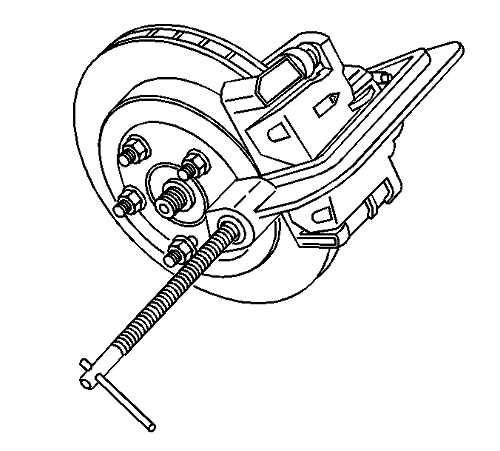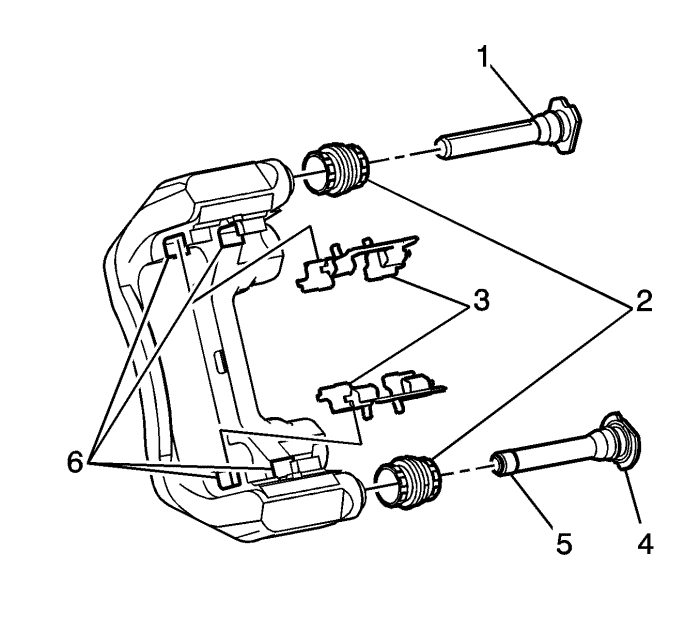Rear Disc Brake Mounting and Hardware Inspection
Warning: Refer to Brake Dust Warning in the Preface section.
Warning: Refer to Brake Fluid Irritant Warning in the Preface section.

- Install a large C-clamp, over the body of the brake calliper with the C-clamp ends against the rear of the calliper body and against the outer brake pad.
Caution: When using a large C-clamp to compress a calliper piston into a calliper bore of a calliper equipped with an integral park brake mechanism, do not exceed more than 1 mm (0.039 in) of piston travel. Exceeding this amount of piston travel will cause damage to the internal adjusting mechanism and/or the integral park brake mechanism.
- Tighten the C-clamp just enough to compress the calliper piston 1 mm (0.039 in) of travel only.
- Remove the C-clamp from the calliper.
- Grasp the brake calliper and attempt to move the brake calliper vertically. The brake calliper should not exhibit excessive looseness.
- Without disconnecting the hydraulic brake flex hose, remove the calliper from the calliper bracket, and support the calliper. Refer to Rear Brake Calliper Replacement .
- Inspect the calliper bolts to ensure that they are not bent or damaged. If the bolts are bent or damaged, the bolts require replacement.

- Ensure the disc brake pads are held firmly in place on the brake calliper mounting bracket, yet slide easily on the mounting hardware (3) without binding.
- Inspect the disc brake pad mounting hardware, pad retainers (3), for the following:
| • | Looseness at the brake calliper mounting bracket |
| • | Excessive wear and/or looseness at the disc brake pads |
| • | Missing mounting hardware |
- If any of the conditions listed are found, the disc brake pad mounting hardware requires replacement.
- Inspect the brake calliper guide pins (1, 4) by gently pushing inward, without disengaging the slides from the boots, then pull outward, and observe for the following:
| • | Restricted calliper guide pin movement |
| • | Split or torn boots (2) |
| • | Looseness in the brake calliper mounting bracket |
| • | Seized or binding calliper guide pins |
- If any of the conditions listed are found, the brake calliper mounting hardware requires replacement.
- Inspect the brake calliper mounting bracket for being bent, cracked, or damaged.
- If any of the conditions listed are found, the brake calliper mounting bracket requires replacement.
| © Copyright Chevrolet. All rights reserved |

